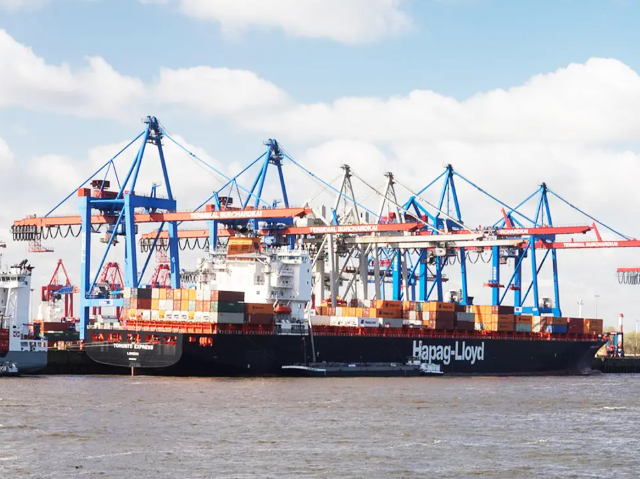Understanding Modern Maritime Trade Routes Between China and Canada
The maritime corridor connecting China and Canada represents one of the most vital trade routes across the Pacific Ocean. As we look ahead to 2025, sea freight from China to Canada continues to evolve with technological advancements, improved logistics efficiency, and changing global trade dynamics. This comprehensive guide explores the latest developments in shipping times, cost factors, and essential considerations for businesses engaged in trans-Pacific trade.
The significance of this shipping route has grown substantially, with bilateral trade between China and Canada reaching unprecedented levels. As businesses seek reliable and cost-effective shipping solutions, understanding the intricacies of sea freight from China to Canada becomes crucial for successful international commerce.
Key Ports and Shipping Routes
Major Chinese Departure Ports
China's eastern seaboard hosts several crucial ports that serve as primary departure points for Canadian-bound cargo. The Port of Shanghai, as the world's busiest container port, processes millions of TEUs annually. Other significant ports include Shenzhen, Ningbo-Zhoushan, and Guangzhou, each offering unique advantages in terms of handling capacity and specialized shipping services.
These ports have undergone substantial modernization for 2025, implementing automated systems and advanced cargo handling technologies. This infrastructure enhancement has significantly improved loading efficiency and reduced waiting times for vessels departing for Canadian destinations.
Canadian Destination Ports
On the Canadian side, the Port of Vancouver remains the primary gateway for Asian imports, handling approximately 50% of all container traffic entering Canada. The Port of Prince Rupert has emerged as a vital alternative, offering faster transit times due to its geographical advantage as the closest North American port to Asia.
The Port of Montreal, though requiring passage through the Panama Canal for vessels from Asia, serves as an important entry point for cargo destined for eastern Canada. These ports have implemented new technologies and expanded their capacity to accommodate the growing trade volume expected in 2025.
Transit Times and Scheduling
Standard Shipping Durations
Transit times for sea freight from China to Canada vary depending on the specific ports of departure and arrival. Direct routes from major Chinese ports to Vancouver typically take 11-14 days, while shipments to Prince Rupert can arrive in 10-12 days. Cargo bound for eastern Canadian ports like Montreal may require 30-35 days due to the extended route through the Panama Canal.
These timelines represent optimal conditions, but various factors can influence actual transit duration. Weather conditions, port congestion, and customs clearance procedures all play crucial roles in determining final delivery schedules.
Seasonal Variations and Peak Periods
Shipping schedules in 2025 continue to be influenced by seasonal patterns. The peak season typically runs from August to October, when holiday-related cargo increases significantly. During these months, transit times may extend by 2-4 days due to higher vessel utilization and port congestion.
Winter months, particularly in northern routes, can experience weather-related delays. However, improved weather forecasting and route optimization technologies have helped minimize these disruptions compared to previous years.

Cost Analysis and Pricing Structures
Base Shipping Rates
The cost of sea freight from China to Canada in 2025 varies significantly based on multiple factors. Basic container rates typically range from $2,500 to $4,500 for a 20-foot container (FCL) and $3,500 to $6,000 for a 40-foot container. These base rates cover the primary ocean freight charges but exclude additional fees and surcharges.
Less than Container Load (LCL) shipments are priced by cubic meter, usually ranging from $40 to $100 per CBM, depending on the specific route and current market conditions. These rates represent a more economical option for smaller shipments while maintaining reliable service standards.
Additional Charges and Surcharges
Beyond base rates, several supplementary charges affect the total shipping cost. These include terminal handling charges (THC), documentation fees, customs clearance costs, and inland transportation expenses. Fuel surcharges, which fluctuate with global oil prices, typically add 10-15% to the base rate.
Insurance costs have become more standardized in 2025, with comprehensive coverage typically ranging from 0.5% to 1% of the cargo value. Many shipping lines now offer integrated insurance packages, simplifying the process for shippers.
Shipping Documentation and Compliance
Essential Documentation Requirements
Successful sea freight from China to Canada requires proper documentation preparation. Key documents include the Bill of Lading, Commercial Invoice, Packing List, and Certificate of Origin. In 2025, most documentation processes have become digitized, streamlining submission and verification procedures.
Canadian customs regulations require detailed product descriptions, accurate HS codes, and complete supplier information. Advanced electronic filing requirements now mandate submission at least 24 hours before vessel departure, ensuring smooth customs clearance upon arrival.
Regulatory Compliance and Standards
Both Chinese and Canadian authorities maintain strict regulatory standards for international shipping. Compliance requirements include proper cargo declaration, adherence to packaging standards, and meeting specific product safety regulations. Environmental regulations have become more stringent in 2025, with new requirements for sustainable shipping practices and reduced emissions.
Importers must ensure their shipments meet Canadian standards for product safety, labeling, and environmental protection. Non-compliance can result in delays, additional costs, or cargo rejection at the destination port.
Frequently Asked Questions
What factors affect shipping times from China to Canada?
Shipping duration is influenced by several factors including port of departure, destination port, vessel speed, weather conditions, port congestion, and customs clearance efficiency. Direct routes to western Canadian ports are generally faster than shipments to eastern Canada requiring Panama Canal transit.
How can I track my sea freight shipment from China to Canada?
Most shipping lines provide online tracking systems using container or Bill of Lading numbers. Advanced tracking solutions in 2025 offer real-time updates, estimated arrival times, and automated notifications for key shipment milestones.
What is the most cost-effective shipping method for small quantities?
For smaller shipments, Less than Container Load (LCL) shipping typically offers the most economical solution. This option allows sharing container space with other cargo while maintaining reasonable transit times and reliable service standards. Consider consolidation services for optimal cost efficiency.


